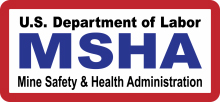How Trump’s 2-for-1 regulatory approach translates to mining
There is a great deal of uncertainty in Washington regarding how the new administration’s goal of reducing regulations will impact rulemaking moving forward.
This is definitely the case at the Mine Safety & Health Administration (MSHA). At press time, agency administrators publicly indicated that May 23 is still the effective date for the workplace examination rule.
Apparently, the Jan. 20 White House memorandum requiring all new regulations not yet in effect to be held in abeyance for an additional 60 days for further review has been deemed not to be applicable to this revised regulation. That memorandum contains an exception for rules involving “urgent circumstances relating to health [and] safety.” Mine operators might dispute that this regulation falls into that category. Nonetheless, there is no denying the rulemaking landscape has changed.
 This is clearly true when it comes to pending rulemaking. President Donald Trump issued an executive order (No. 13771) on Jan. 30 requiring that “for every one new regulation issued, at least two existing regulations be identified for elimination.” Unlike the White House’s Jan. 20 regulatory freeze, this executive order does not contain any exception for health and safety issues.
This is clearly true when it comes to pending rulemaking. President Donald Trump issued an executive order (No. 13771) on Jan. 30 requiring that “for every one new regulation issued, at least two existing regulations be identified for elimination.” Unlike the White House’s Jan. 20 regulatory freeze, this executive order does not contain any exception for health and safety issues.
This order obviously raises a number of complications for anticipated MSHA rulemaking. For instance, the current MSHA regulatory agenda indicates that a notice of proposed rulemaking for respirable crystalline silica will be published in April. To get this regulation on the books, the executive order would appear to require the agency to also identify two existing standards for elimination. How does this work?
Potential hurdles
It is probably not too big of a stretch to suggest this executive order will likely produce a substantial amount of litigation. Section 101 of the Mine Act requires MSHA to conduct rulemaking in order to promulgate, revise or revoke a rule. Consequently, the agency would arguably have to initiate three rulemaking proceedings in order to add one new regulation.
That is a lot of time, effort and resources to produce one regulation. Given the cost, it is more likely that the agency will delay or even drop pending rulemaking.
Opponents of the new administration’s regulatory reform effort will undoubtedly explore a myriad of potential legal challenges. At press time, one lawsuit had already been filed against the overall executive order. With respect to the Mine Act, one target will probably be the Section 101 proscription that “no mandatory health or safety standard promulgated under this title shall reduce the protection afforded miners by an existing mandatory health or safety standard.”
Generally, this language essentially means you cannot implement a standard that adversely impacts the protections provided by existing standards. In the unique circumstance created by this executive order, however, it is possible that an argument will be made that the requirement that a new regulation eliminate the safety and health protections provided by two existing standards is inconsistent with the legal requirements of the Mine Act. Clearly, there is a battle on the horizon.
What to cut?
Assuming for the sake of this discussion that these legal hurdles can be overcome, what regulations should be eliminated? Everyone has their favorite candidate when it comes to ridding regulations. Because I have the floor, here is my primary target: 30 C.F.R. §56.9101.
This is a classic “got ya” standard that provides no appreciable benefit to safety. The regulation states in a pertinent part that “operators of self-propelled mobile equipment shall maintain control of the equipment while it is in motion.”
This standard generally gets cited following an accident in circumstances in which an operator has done everything possible to provide a safe working environment for operating mobile equipment. Specifically, traffic rules and patterns are in place, the mobile equipment is in good working order, and personnel are effectively trained. Notwithstanding these good faith efforts, this standard is cited to penalize a company for an equipment operator’s split-second lapse of attention or judgment.
There is no appreciable benefit to safety accomplished by utilizing this standard. Traffic rules and patterns, equipment operating condition, and training are all accomplished by other standards. In many cases, inspectors issue these citations with an apology: “Sorry, you didn’t do anything wrong in this situation but here’s your citation.” This standard can be cut with no adverse impact to the safety of miners.
William Doran and Margo Lopez are with the national labor, employment and safety law firm Ogletree Deakins. Contact them at william.doran@ogletree.com and margaret.lopez@ogletree.com.









